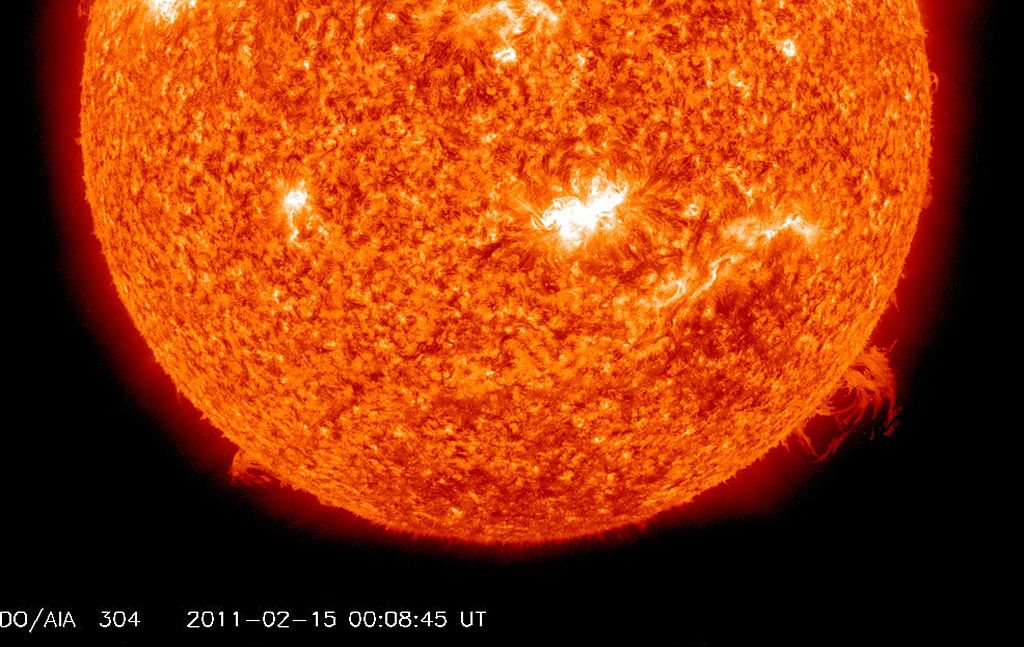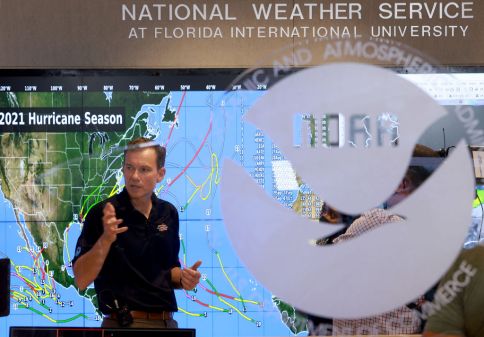Geomagnetic storm expected to pass with minimal impact on agencies’ satellites, comms

Editor’s note: This story has been updated with the latest storm forecast from the Space Weather Prediction Center.
The worst of the geomagnetic storm affecting Earth likely occurred Wednesday night, with only minor conditions since, according to the Space Weather Prediction Center on Friday.
SWPC is keeping agencies like NASA abreast of the storm, which may affect their satellites and communications over the next 24 hours, but expected moderate conditions at worst as of 10:11 a.m. EST.
Forecasters at the National Oceanic and Atmospheric Administration’s facility in Boulder, Colorado continue to analyze solar wind data coming in from the Deep Space Climate Observatory (DSCOVR) and provide agencies and industry with situational awareness.
“It’s almost like the Sun shoots a magnet out into space,” Bill Murtagh, SWPC program coordinator, told FedScoop.
Part of an eruption began impacting the Earth’s magnetic field Wednesday night, producing geomagnetic storm conditions at the G1, minor, and G2, moderate, levels on a scale that goes up to G5, extreme. The storm was expected to peak at the G3, strong, level but no longer.
Geomagnetic storms heat and expand the atmosphere, changing its density in a way that can throw satellites off their orbit, and they can also cause electrostatic discharge on spacecraft. SpaceX lost 40 Starlink satellites it launched in February due to geomagnetic activity that didn’t even reach the G1 level.
“We have good communication,” Murtagh added. “We get these alerts and warnings out not just to industry but anybody and everybody that owns satellites, so NASA for example, with near-Earth and deep-space satellites, would get this information.”
SWPC is a division of the National Weather Service that’s been keeping an eye on a small cluster of sunspots, three times the size of Earth, that’s been unusually active the last four to five days. Daily eruptions have caused coronal mass ejections, releases of a billion tons of plasmic gas and magnetic field.
It issues alerts to about 70,000 Product Subscription Service subscribers, including almost every major satellite company globally, to help them plan for geomagnetic storms.
While satellite companies don’t really share information on how the storms ultimately affect them, agencies like NASA do — though not immediately. Weeks to months of analysis are required to determine if an anomaly on a spacecraft was due to a geomagnetic storm or something else, and SWPC might not catch wind for six months after an event, Murtagh said.
The last time the Earth experienced a G5-level storm, Oct. 29, 2003, NASA eventually released a report revealing that about 50% to 60% of their satellite fleet had been affected to various degrees.
“When they feel the effects, we will typically hear about it afterward,” Murtagh said.
No agencies had reported being affected by the current geomagnetic storm as of Friday, and G2-level storms don’t typically produce “big” effects, he added. But SWPC can still extend its existing watch or announce a new one and issue alerts as the storm level changes.
Geomagnetic storms can also degrade communications because they cause changes in the ionosphere, the layer of the atmosphere satellite signals must pass through to reach Earth. That said, cell phones will remain unaffected because line-of-sight communications are resilient due to cell towers.
Airlines aren’t as lucky because planes rely on high-frequency communications when traveling over oceans, and those signals bounce off the ionosphere and are degraded by solar flares. The situation isn’t dangerous because airlines have redundancies built in, namely switching to satellite communications or linking to other aircraft, Murtagh said.
A final way geomagnetic storms affect Earth is with geomagnetically induced currents that can flow through good conductive material like salt water and certain soil. The currents can move through rock formations into power grids, and introducing a direct current into an alternating current network is “not a good thing,” Murtagh said.
In the case of a G3-level storm however, the situation is “mostly” manageable without risk of power outages, he added.
The Sun’s magnetic poles reverse every 11 years, leading to a solar cycle much like a hurricane season where sunspots emerge.
Generally there are one to two G5-level storms every solar cycle, although there were none last cycle. No G5 or even G4s have been seen so far this cycle, but the solar maximum, when the most sunspots appear, isn’t until 2024-25.
“We’re ramping up to the next maximum,” Murtagh said. “So we’re going to see an increase of activity.”


